Alexander Lisovsky: the storm of Troubles
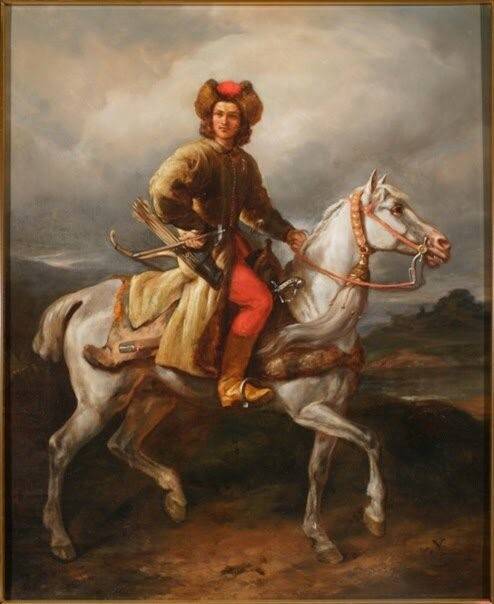
Lisovchik, Y. Kossak
Troubled times led to historical arena of many adventurers. However, in order to count on success, adventurism alone was not enough; military leadership, enterprise, courage and incredible luck were also needed. All this was in abundance by the Lithuanian gentry Alexander Lisovsky, who will be discussed.
Companion of False Dmitry II
Alexander Lisovsky came from a noble family and was born in Vilna. The date of birth is considered to be 1580, but some sources also mention 1575. Having received an education, from a young age he began military service. For several years he served in the army of the Wallachian ruler, then returned to Poland, where in 1606–1607. joined the rokosh (that is, the gentry uprising against the king) Nikolai Zebzhidovsky. For participation in rokosh, King Sigismund III outlawed Lisovsky. When the rebels were defeated, Lisovsky fled to the Moscow kingdom, where he joined with his detachment of 600 people to the army of the impostor False Dmitry II.
False Dmitry gave Lisovsky the rank of colonel, but he and his entire detachment had no salary, they had to decide all supply issues themselves. Naturally, at the expense of the local population.
Lisovsky's detachment was soon replenished with Russians and already numbered several thousand people. Subsequently, the national composition of foxes, as they will soon be called, became unusually variegated. In addition to Poles, Lithuanians and Russians, there were also Tatars, Don and Zaporozhye Cossacks, Swedish, English and German mercenaries.
The first major success of Lisovsky was the defeat of the tsarist troops of the governor Zakhary Lyapunov in the Battle of Zaraisk in March 1608. Then he made a major raid on the Ryazan lands, but in June of the same year he was defeated in the Battle of the Bear Ford and retreated to Tushino to the troops of the impostor.
After the battle at the Bear Ford, Lisovsky finally developed a tactic that allowed him to be elusive for a long time. First of all, he established strict discipline in his detachment. All his soldiers were mounted, operated without carts and guns, and all the necessary supplies were carried on horseback. Thanks to this, his detachment was distinguished by high speed, appeared in front of the enemy from nowhere and after the battle disappeared into nowhere.
The next important point is secrecy. To ensure the invisibility of the movement of his troops, Lisovsky ordered to kill everyone who met them on the way. Only the dead, he believed, would not tell the enemy in which direction his detachment had gone. During attacks on villages, everything was often cut out, only a scorched desert remained.
When attacking the tsarist troops, success was determined primarily by surprise. However, if the enemy put up strong resistance and did not flee during the first attack, Lisovsky retreated as suddenly as he appeared.
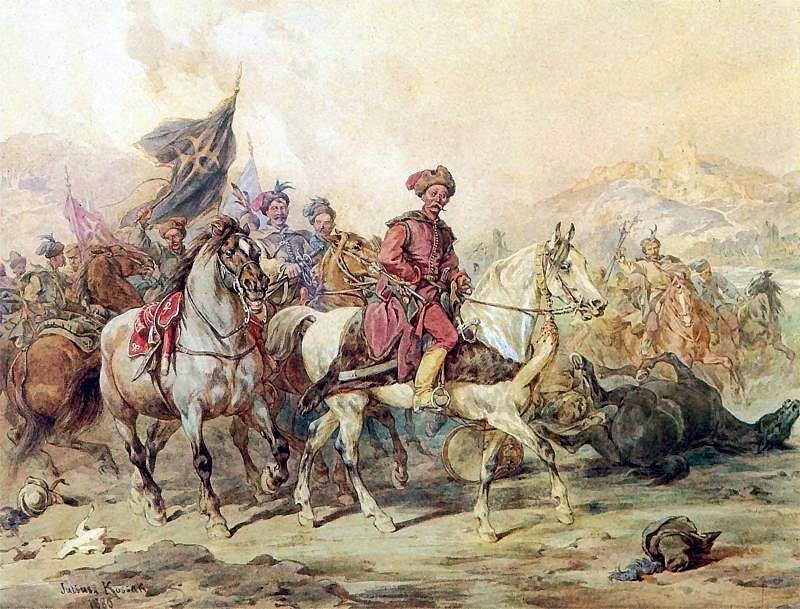
Lisovchiki. Y. Kossak
At the end of 1608, together with the hetman Sapieha, Lisovsky took part in the siege of the Trinity Monastery. In the spring of the following year, he made a new raid, took Suzdal and made it his residence. Besieged Yaroslavl, but to no avail. From Yaroslavl, Lisovsky made a trip to Kostroma, which had rebelled against False Dmitry. The assault on Kostroma also ended unsuccessfully for Lisovsky, and he retreated again.
Meanwhile, important political changes soon took place. King Sigismund officially declared war on Russia and besieged Smolensk, and the army of False Dmitry in Tushino at the beginning of 1610 finally disintegrated: the Poles went to the king near Smolensk, the Russians went to Kaluga to the impostor.
For Lisovsky, these changes meant a lot. The king forgave him, and now, from the status of a robber, he again became a royal subject.
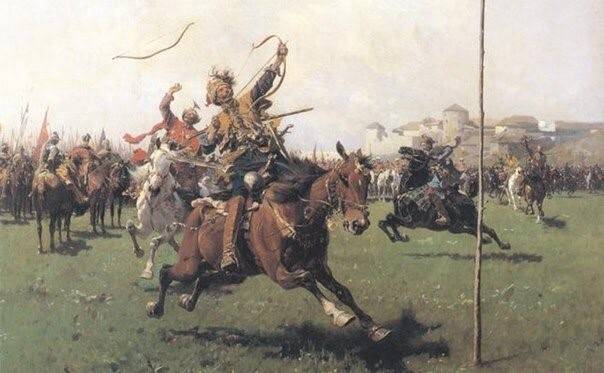
Foxes practicing archery. Painting by Józef Brandt
In the service of the king. 1610–1616
In the spring of 1610, Lisovsky began a new campaign, the purpose of which was to reach the royal troops near Smolensk. In April, he took and plundered Rostov, after which he defeated the garrison of the Kalyazinsky monastery and went through Tver, Toropets and Velikiye Luki to Pskov. The German mercenary and author of valuable memoirs about the Time of Troubles, Konrad Bussov, describes further events as follows:
Having rendered this service to the Pskovites, Lisovsky went over to the side of the Polish king and spent this winter (from 1610 to 1611) in Voronechye.
After that, Lisovsky finally joined the king near Smolensk and in the following months played an important role in the fighting for the city, attacking Russian troops.
In 1612, at the head of a detachment of 2-3 thousand people, he made a new big campaign in the northern regions. It is known that he was able to take and plunder Vologda, after which he went towards Arkhangelsk, and for a long time there was no news from him at all. Acting in the rear, he easily evaded the pursuit of the slow tsarist troops, after which in 1614 he again returned to Smolensk.
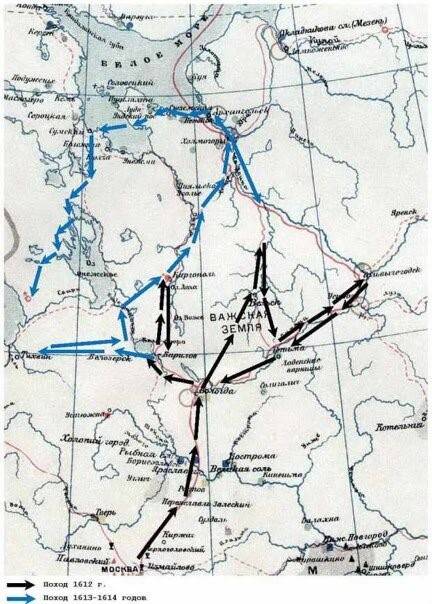
Campaigns of Lisovsky in 1612–1614
However, the next raid of Lisovsky, made in 1615, became more famous. Its main goal was to divert the Russian troops that were besieging Smolensk, which was captured by the Poles at that time. In March, Lisovsky approached Bryansk and besieged it for 11 weeks, but due to the lack of artillery, he could not take it. Against 2 foxes, a 000-strong detachment of Prince Shakhovsky was sent. However, Lisovsky, without waiting for his approach, attacked him first and defeated him.
Concerned about the success of Lisovsky, the tsar sent his best commander against him, the hero of the Second Militia, Prince Dmitry Pozharsky. The battle between them took place at the end of August in the vicinity of the city of Orel. Having defeated the vanguard of Pozharsky, Lisovsky nevertheless could not overcome the main forces of the prince. Refusing to continue the battle, Lisovsky took Orel by storm, plundered it and burned it.
Then Lisovsky went north. With a sudden attack, he defeated the tsarist troops of the governor Fyodor Sheremetev, took Rzhev, then burned Torzhok. Having rounded a large loop around Moscow, Lisovsky ruined and plundered a number of small towns and villages. He had about 800 people left, so he could no longer take large cities, and he tried to avoid clashes with numerous Russian detachments. Despite the fact that any such clash could now be his last, Lisovsky still retained his detachment and took him in January 1616 near Smolensk - to where the campaign began.

Great Raid of 1615
For this raid, the king generously rewarded Lisovsky. For several months, the foxes stood in the Smolensk region, preparing for a new similar campaign. However, it was already realized without Lisovsky: in October 1616, he himself fell from his horse and died from his injuries.
Lisovchiki, after the death of the commander, remained as a separate detachment. They took part in the campaigns of 1617-1618, and after the conclusion of the Deulino Peace Treaty, King Sigismund sent them to fight as mercenaries of Emperor Ferdinand in the Holy Roman Empire, where the Thirty Years' War had recently begun. There they, just as before in Russia, distinguished themselves by cruelty towards the civilian population, as a result of which, two years later, the emperor refused their services.
The foxes were disbanded only in 1636.
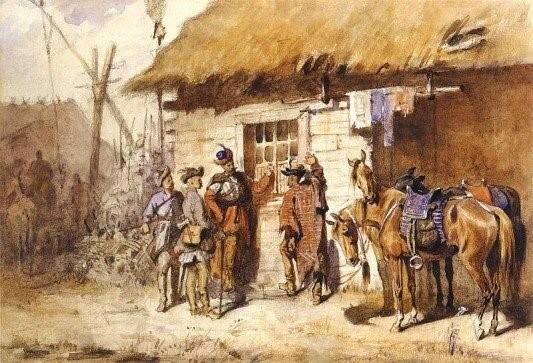
Lisovchiki in front of the inn. Y. Brandt
Posthumous glory
Having gained fame in Russia as robbers and murderers, Lisovsky and the foxes were romanticized by many generations of Polish writers, poets and artists. The portrait of Lisovsky himself has not reached our time, but there are more than enough paintings depicting foxes. Back in the 1649th century, many poems and poems appeared, the main character of which was Lisovsky. Interestingly, the authors did not try to hide his cruelty, but, despite this, he looks like a heroic personality to them. Thus, the poet Samuil Tvardovsky wrote in XNUMX:
"Lisovsky is fighting
And like a fire leaves nothing behind,
The road is smooth and everywhere in front of him is a straight path,
Not boarding any boats and not stepping on bridges,
Through lakes and rivers and all floods,
We reached places where no Pole has ever set foot...
I reached the Ob, where the distant Golden Woman ...
He is taken first for Baba, and then for the offerings,
Having broken the idol, he took so much gold,
How much could you take…”
After 250 years, the personality of Lisowski interested another Polish poet, Stefan Zeromski. He has a gloomy picture of the war in the foreground:
"Pan Lisovsky rushes to Astrakhan itself,
To the shore of the wide Caspian Sea,
And fills the Bear Fords with blood,
And sprinkles the Trinity rock with blood,
In the Rostov church people are being killed,
Through Kostroma, Yaroslavl, Uglich, Vologda
Made it to the icy shores
Where frost compares strength with foamy waves,
Where are the icy mountains with a creak, with a crack,
They fight each other in depth.
Polish banners smash Tsar Basil,
Burning oak fortresses, chopping people at the root,
Where the cities stood, the wind carries feathers,
In the ditches, the bloody bones mourn the rain ... "
Information